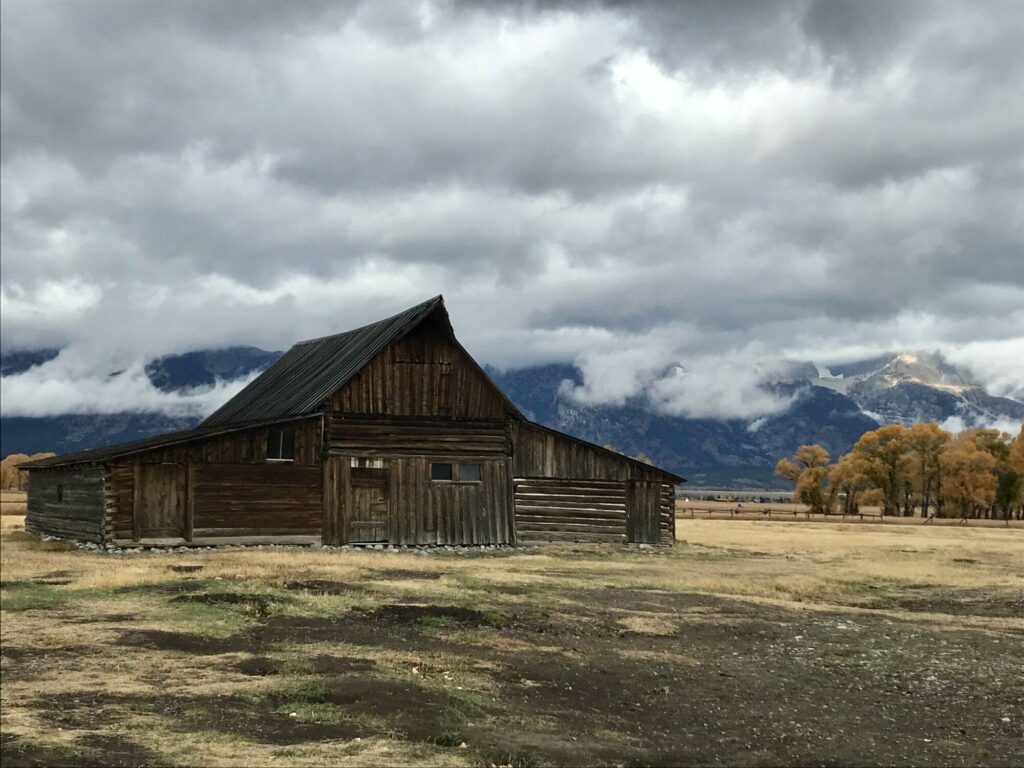
Thousands of properties in farming areas include original barns, many over a century old. If you own one of these older barns, you will want to authenticate the age before dismantling it and selling the reclaimed wood or using it in construction. Vintage, reclaimed timber, is in demand by artisans who use it in the creation of homes and furnishings.
Although there is usually no way to pinpoint an old barn’s actual building date, there are several indicators that will help you determine the construction timeframe. A barn’s building style, frame, and nails provide valuable clues. Local tax records may also offer essential information.
Check Tax Records for Building Dates
City and county tax records often include the date homes were built on farms. However, even if local records provide the date your farm was constructed, the barn was very likely built at a different time.
Per industry publication Farm and Dairy, early settlers often built log cabins and then barns. Eventually, they created the homes that appear on many tax rolls today.
Use Carved Dates With Caution
A date scratched on a foundation stone or chiseled into other barn materials may give you an idea of its age. But these indicators are not common. Early settlers were more concerned about constructing shelters for animals and hay storage than they were about recording building dates.
Some barns include dated foundation stones with carved dates, and you could find a date on timber or even marked on roof slate tiles. The problem is, the dates are often misleading.
A date on a stone might reflect a time when the barn was changed from a ground barn to a bank barn. Dates on timber could mark the time a barn was moved and then rebuilt. Dated roof slates often indicate the year they were installed, not necessarily when an original barn went up.
A Barn Roof Holds Clues to its Age
Barns constructed before the 1860s had gabled roofs and short sides that were typically 12 feet high. They had enough space to hold the amount of hay farmers could produce. However, advancing technology made it possible for farmers to store much more hay, and that meant barns needed taller roofs that added room.
Farmers began adding haystacks and gambrel roofs that were high enough to hold much more hay. The gambrel roof is still in everyday use on farms and also the inspiration for “barn-style” roofs used in home construction.
A barn with a gabled roof was probably built in the early 1800s. Barns with gambrel roofs are usually modern, but can also be older since many farmers converted gabled roofs to gambrel roofs. A barn with original twelve-foot walls was very likely constructed before the 1880s, regardless of the roof type.
If your barn still has a gabled roof, it may be standing, but is probably in disrepair. Should you decide to have your barn professionally dismantled, and do not plan to use all the wood, you can recoup the cost of the project by selling it. Reclaimed lumber is in demand. Companies like Modern Timber Craft build custom items using reclaimed barn wood that is up to 250 years old.
Examine the Barn’s Frame
A look at your barn’s frame can help you determine its age. Barn framing has evolved over the centuries, making it a good indicator of age.
The first barns in the U.S. included more stabilizing structures than are found in more modern styles. Old barns had perpendicular or vertical beams called purlins, as well as joists and tie beams. They kept the roof from caving in but took up a lot of valuable space.
By the mid-to-late 1800s, farmers began to modify barns to accommodate more hay. They removed connecting purlins, created gambrel roofs, and found innovative ways to develop structural rigidity. If your barn has cut off tenons in posts or open mortices, the barn was designed before tall haystacks were common.
Nails Offer a Lot of Information
The nails used to build your barn also offer clues to its age. Over the last three centuries, technology, changes in metallurgy, and mass production have changed nails’ appearance and material makeup.
Examining a barn’s nail heads can help narrow down its construction date. Barns have been built using three distinct nail types:
- Hand- Forged Nails: Before 1800, most builders hammered out their nails by hand, giving each one a pointed, four-sided shape. Most farmers switched to mass-produced, cut nails as soon as they were developed, but some worked with hand-forged nails for many more years.
- Cut Nails: In 1791, cut nails were invented. They were cut from sheet metal, mass-produced, and included triangular or square heads. Cut nails were in everyday use by the 1800s.
- Wire Nails: The wire nails that are in use today became popular around 1900. Nails are round, have circular heads, and are prevalent in 20th-century barns.
Barn Timbers Help Pinpoint a Building Date
The age of reclaimed barn wood used by companies like Modern Timber Craft is often authenticated by inspecting marks left on timber during construction.
Tools used to cut timber have evolved over the years, and each type of device left a unique imprint on wood. Historic restoration experts writing for Hunker suggest that you inspect barn timber marks with a magnifying glass to get a close look at details.
Identifying the tools used during construction can narrow down a barn’s building date as follows:
- Ax: Original settlers often built homes in the wilderness, and their only tool was usually an ax. As they cut timber, ax blades left long, smooth divots in the wood. Barns constructed with these hand-hewn timbers are generally very old.
- Pit Saw: Some early settlers used manually powered pit saws designed to rip timbers in half. The tools had two handles, so it was common for two people to use them. The saws created irregular gouges running up and down on the wood. Pit saws were used in New York as early as the 1840s.
- Gash Saw: From the 1600s to the early 19th century, many east coast farmers built barns using water-wheel-powered gash saws. The saws left unique, vertical chipped marks.
- Circular Saw: By 1860, farmers were using circular saws that became standard. A circular saw’s marks are very identifiable. If your barn shows signs of being built with circular saws, it was constructed after the Civil War.
There are several ways to determine the age of a barn on your property. You can check local tax records. Dates carved in building materials may help, and you can glean information from a barn’s roof style. The nails used during construction often narrow down the construction timeframe. Marks left in the timber also offer valuable clues.

Written by Jake Park
Jake is the founder of Modern Timber Craft and is a seasoned reclaimed woodworking enthusiast with over 20 years experience.


